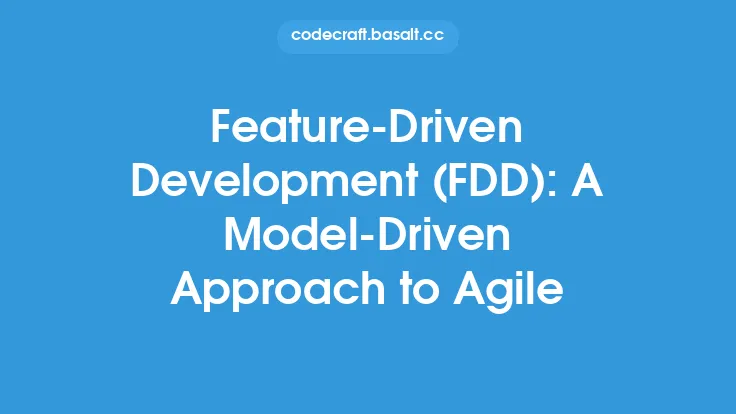Domain Driven Design (DDD) is an approach to software development that emphasizes understanding the core business domain and modeling it in code. This approach was first introduced by Eric Evans in his 2003 book "Domain-Driven Design: Tackling Complexity in the Heart of Software." At its core, DDD is about creating software that accurately reflects the business domain it is intended to support, by deeply understanding the domain and using that understanding to guide the development process.
Introduction to Domain Driven Design
Domain Driven Design is based on the idea that the primary focus of software development should be on understanding the business domain, rather than on the technology used to implement it. This approach recognizes that the business domain is complex and that software development should be guided by a deep understanding of that complexity. DDD provides a set of principles and patterns for developing software that is closely tied to the business domain, and that can evolve over time as the business domain changes.
Key Principles of Domain Driven Design
There are several key principles that underlie the Domain Driven Design approach. These include:
- Domain-centric: The primary focus of software development should be on understanding the business domain.
- Model-driven: The software development process should be guided by a model of the business domain.
- Context-bound: The model of the business domain should be specific to the context in which it is being used.
- Continuous learning: The software development process should involve continuous learning and refinement of the model of the business domain.
- Collaboration: Software development should involve close collaboration between developers, domain experts, and other stakeholders.
Benefits of Domain Driven Design
The benefits of using Domain Driven Design include:
- Improved understanding of the business domain: By focusing on understanding the business domain, developers can create software that more accurately reflects the needs of the business.
- More effective software development: By using a model-driven approach, developers can create software that is more maintainable, flexible, and scalable.
- Better communication: The use of a ubiquitous language and the involvement of domain experts in the software development process can improve communication between developers, domain experts, and other stakeholders.
- Increased agility: The continuous learning and refinement of the model of the business domain can help organizations to respond more quickly to changing business needs.
Challenges of Implementing Domain Driven Design
While Domain Driven Design offers many benefits, it can also be challenging to implement. Some of the challenges include:
- Requires a deep understanding of the business domain: Developers need to have a deep understanding of the business domain in order to create an accurate model of it.
- Can be time-consuming: The process of creating a model of the business domain and refining it over time can be time-consuming.
- Requires collaboration: The involvement of domain experts and other stakeholders in the software development process can be difficult to manage.
- Can be difficult to scale: As the size and complexity of the business domain increases, it can be difficult to scale the model and the software development process.
Best Practices for Implementing Domain Driven Design
To overcome the challenges of implementing Domain Driven Design, there are several best practices that can be followed. These include:
- Start with a small, focused domain: Begin by modeling a small, focused area of the business domain, and then gradually expand the model to include other areas.
- Use a iterative and incremental approach: Use an iterative and incremental approach to software development, with continuous refinement of the model of the business domain.
- Involve domain experts: Involve domain experts in the software development process, to ensure that the model of the business domain is accurate and relevant.
- Use a ubiquitous language: Use a ubiquitous language to describe the business domain, to ensure that all stakeholders have a shared understanding of the domain.
Tools and Techniques for Domain Driven Design
There are several tools and techniques that can be used to support the Domain Driven Design approach. These include:
- Domain modeling tools: Such as entity-relationship diagrams, class diagrams, and state machines.
- Agile development methodologies: Such as Scrum and Extreme Programming, which emphasize iterative and incremental development, and continuous refinement of the software.
- Test-driven development: Which involves writing automated tests to validate the behavior of the software, and to ensure that it meets the requirements of the business domain.
- Continuous integration and deployment: Which involves automating the build, test, and deployment of the software, to ensure that it is always up-to-date and consistent with the model of the business domain.
Conclusion
Domain Driven Design is a powerful approach to software development that can help organizations to create software that is closely tied to the business domain, and that can evolve over time as the business domain changes. By following the principles and best practices of DDD, developers can create software that is more maintainable, flexible, and scalable, and that better meets the needs of the business. While there are challenges to implementing DDD, the benefits can be significant, and the use of tools and techniques such as domain modeling, agile development methodologies, test-driven development, and continuous integration and deployment can help to support the DDD approach.





